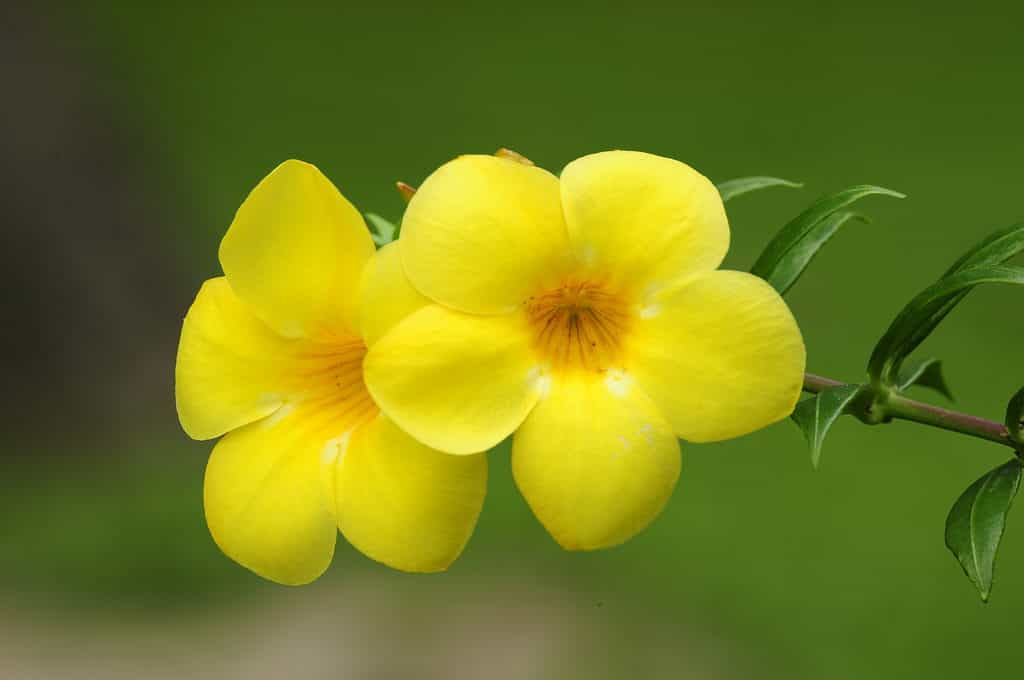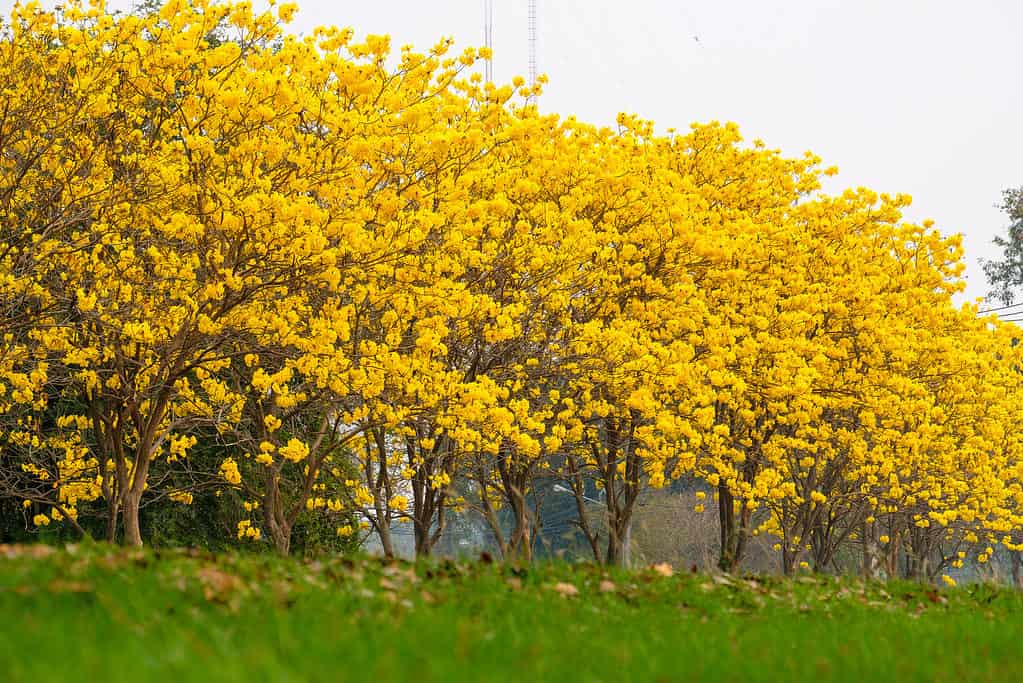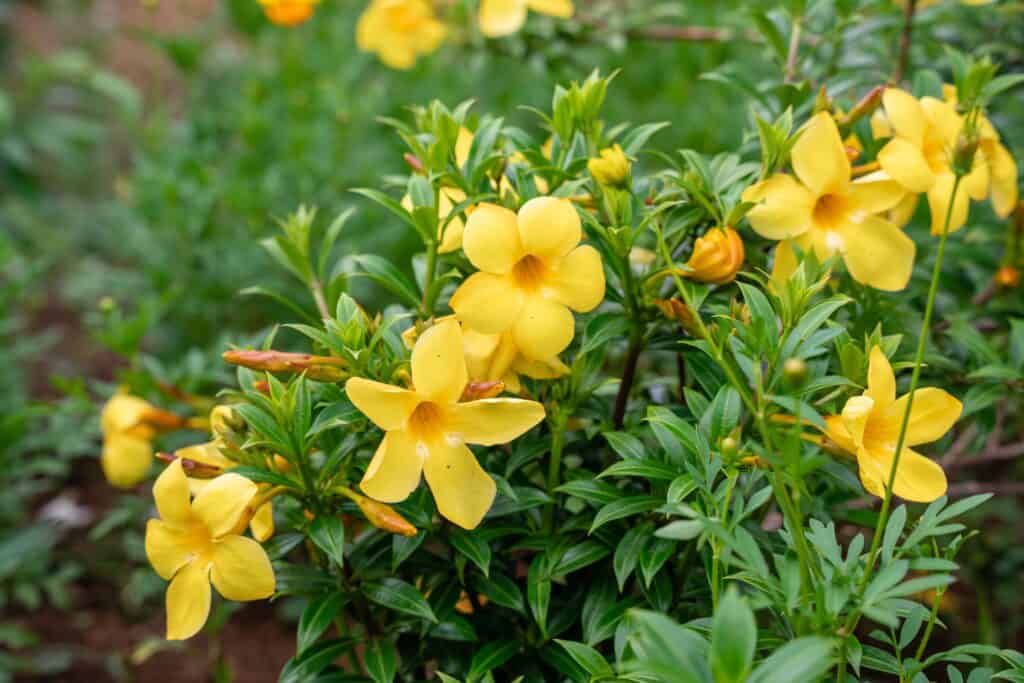What could be the national flower of Brazil, chosen out of thousands to represent the largest country in South America? The choice must be something special for a country that, in total, takes up more than half of the continent’s landmass. Not only that, Brazil is the fifth-largest country in the world! As a country bordering the eastern side of the South American continent, Brazil has over 4,600 miles of Atlantic coastline and shares borders with nearly all other South American countries.
In addition to Brazil’s enormous scale, the country is one of the most highly-populated countries on earth and contains approximately a third of the Latin American region’s population. With the country’s diverse terrain, tropical and sub-tropical landscape features define Brazil’s geography. Throughout the country, you can find forest wetlands, tropical savannas, mountains, and the rainforest of the Amazon River basin. This country is defined by its tropical and sub-tropical climate. Unlike other countries in the southern part of the continent, like Chile, Brazil does not have any arctic or desert ecosystem and only possesses low mountains, no tall mountain ranges like the Andes.
In this sizable country, you can find approximately a quarter of the world’s known plant species. Brazil is home to approximately 46,000 different species of algae, fungi, and plants. This is partially due to the fact that Brazil contains a large portion of the Amazon Rainforest. The Amazon Rainforest ecosystem is home to tens of thousands of plant species. The Amazon River has thousands of fish species. Not only that, but this ecosystem allows numerous rare reptiles, amphibians, and mammal species to thrive.
This country is also home to a unique plant species, which blooms with the national flower of Brazil, the golden trumpet. Often considered to be Brazil’s national flower, the golden trumpet represents the country as a symbol of its culture, people, and values. This article will teach you all about this beautiful flower and its place in Brazilian culture. Let’s dive in!
What is Brazil’s National Flower?

The national flower of Brazil is the golden trumpet flower.
©Zelent Iuliia/Shutterstock.com
Brazil’s national flower, the golden trumpet, is the flower of the golden trumpet tree. These semi-evergreen trees grow to be up to 35 feet tall and grow in the southern and eastern parts of Brazil. These trees grow in the coastal forests of Brazil. Each spring, the trees blossom with showy, bright yellow flowers. When in full bloom, the golden trumpet trees are a sight to behold and are often seen lining trees or parks, bringing bright color with their vibrant golden flowers.
However, there is also some competition for the title of the national flower of Brazil. In 1961, the president of Brazil, Jânio Quadros declared that the Ipê-Amarelo was the national flower. However, others maintain that the golden trumpet tree’s blossoms are not the only national flower of Brazil. Some think that the species Cattleya labiata, also known as the cattleya orchid, should represent the Brazilian people. However, even before 1961, the golden trumpet flowers were one of the most widespread and well-known flowers and remain considered by many Brazilians to be an emblem of the country.
What is the Golden Trumpet Flower?

The flowers of the golden trumpet tree appear in clusters at the end of the tree’s branches.
©arhendrix/Shutterstock.com
Golden trumpet flowers are the blossoms from the tree species Tabebuia chrysotricha, also known as Handroanthus chrysotrichus. These, considered the national flower of Brazil, blossom from what is commonly called the “golden trumpet tree.” These trees grow to be on the smaller size. A typical tree specimen reaches between 25 and 35 feet tall. Its canopy spreads with silver-colored leaves that reach to be 4 inches long. These leaves fall in the months of April and May, leaving the tree bare for the flowers to blossom in stark contrast. When the tree blooms, it produces large, trumpet-shaped yellow flowers. These flowers grow in clusters that can be as small as 2.5 inches or as large as 8 inches long. During the winter, the trees produce long, thin, brown, and hairy seed capsules that remain on the tree over the course of the winter.
The flowers, which are very showy, appear on clusters at the end of the tree branches. The flowers appear in stark contrast to the tree branches since they appear at their fullest splendor when the trees have already lost their leaves but before fresh foliage appears. The flower buds have short, fuzzy hairs, giving them a distinctive look. The trumpet-shaped flowers are open and rich in sweet nectar, making them attractive to honeybees who produce delicious honey.
Where Does the Golden Trumpet Flower Grow?

Lines of golden trumpet trees are a common sight in Brazil.
©sripfoto/Shutterstock.com
In Brazil, the golden trumpet flowers grow on the golden trumpet trees of the country’s coastal forests. They grow well in hot areas where the trees can receive full sun. These trees need to be protected from wind, which can damage them. They also need plenty of warmth, because they will suffer from frost. This tree is native to Brazil, which has the tropical climate that the golden trumpet trees need to thrive. In Brazil’s coastal regions, the golden trumpet trees grow well in sandy loam soil, though the trees can handle other soils with good drainage. The trees are also relatively tolerant of drought, though they grow best in relatively fertile, moist soil.
In Brazil, golden trumpet trees are grown in gardens or to line streets. Because it grows slowly and only achieves a height of 25 to 35 feet, it’s a great addition to a home garden landscape or patio courtyard.
What Is the Cultural Significance of the Golden Trumpet?

The flowers of the golden trumpet have served in Brazil as the subject of many poets’ inspiration.
©Michaelnero/Shutterstock.com
As the unofficial national flower of Brazil, the golden trumpet flower is beloved in Brazil. There, it is known in Portuguese as the “Ipê, Amarelo.” There, the “yellow ipê,” or “golden trumpet,” is one of the most widely-recognized trees in the country. This is due to its bright yellow, showy flowers. The name Ipê is of Tupi origin. The Tupi people were one of Brazil’s largest groups of indigenous people who lived in the area before European colonization. The word Ipê means “thick bark tree.”
As a tree growing throughout Brazil, poets and writers have often penned poems and songs lauding the beauty and uniqueness of the golden trumpet flowers. Since 1961, when the president of Brazil, Jânio Quadros declared the Ipê-Amarelo to be the national flower, the blossoms have appeared in folk art and emblems throughout Brazil. Today, the golden trumpet tree is also one of the most commonly-cultivated trees in the country. Some say that even imagining the tree can impart strength and healing. Among the Brazilian people, it symbolizes strength, beauty, and resistance.
What Are the Other National Symbols of Brazil?

The national bird of Brazil is the rufous-bellied thrush.
©Floratta/Shutterstock.com
Brazil’s people and government have selected several different symbols to represent their country. One of the most well-known is the Brazilian flag, which features a green background containing a yellow diamond and a blue circle defined by a white band and a starry sky.
Here are some of the other symbols of the country, in addition to the national flower of Brazil:
- Brazil does not have an official national animal, but some say that the honor goes to the jaguar, yellow armadillo, golden lion tamarin, or hyacinth macaw.
- The rufous-bellied thrush is the national bird.
- The national motto is “ordem e progresso,” which means “order and progress” in Portuguese.
- The national tree is debated, but some say that the tree is the pau-brasil, which is the species Caesalpinia echinata and is more commonly known as the “brazilwood.”
- The national colors of Brazil are blue, green, and yellow, as found in the flag.
These are just a few of the symbols chosen by the Brazilian people and government leaders to represent this expansive, beautiful country full of numerous plant and animal species, a long history, and diverse cultures. If you travel to Brazil during April or May, look for the golden trumpet flowers blossoming.
The photo featured at the top of this post is © Zelent Iuliia/Shutterstock.com
Thank you for reading! Have some feedback for us? Contact the AZ Animals editorial team.






